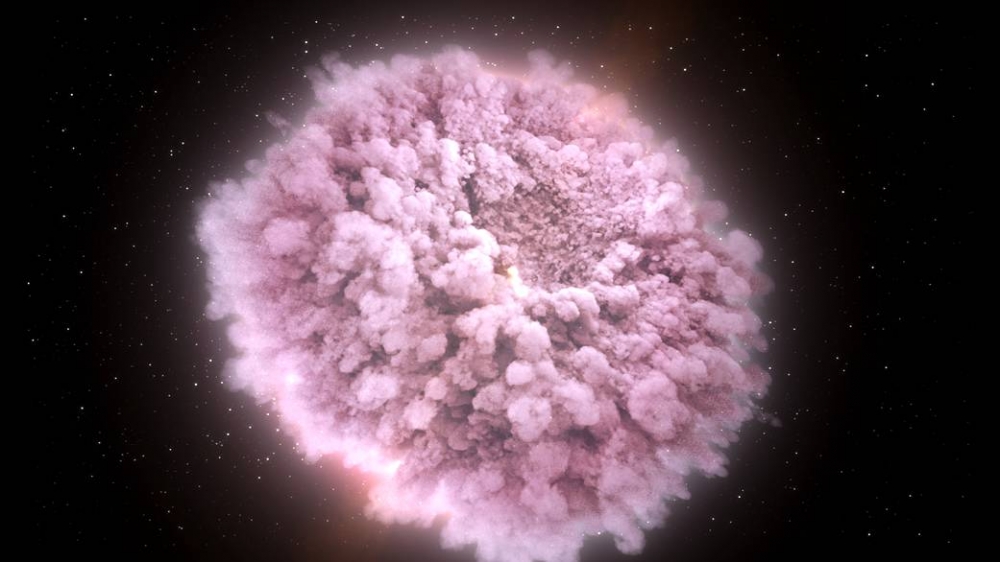Gravitational Waves Show How Fast The Universe is Expanding

A cloud of debris ejected into space as two neutron stars merge. (Credit: NASA Goddard Space Flight Center/CI Lab)
By Nathaniel Scharping | October 16, 2017
The first gravitational wave observed from a neutron star merger offers the potential for a whole raft of new discoveries. Among them is a more precise measurement of the Hubble constant, which captures how fast our universe is expanding.
Ever since the Big Bang, everything in the universe has been spreading apart. It also turns out that this is happening faster and faster — the rate of expansion is increasing.
We’ve known this for a century, but astronomers haven’t been able to get precise measurements of the increase in rate, due mostly to the fact that they’ve had to cobble together a range of data to estimate how far away things in the universe are. Gravitational wave observations offer a direct means of measuring distances in the universe. The LIGO collaboration is constantly monitoring the universe for the subtle stretching of space-time that huge astronomical collisions can create, and measurements of the amplitude and frequency of the waves it catches hold valuable information for astronomers.
See full text